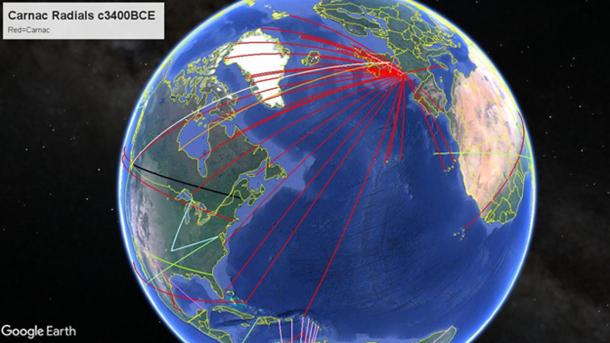Appollynon
Jedi Master
I found this while doing my daily news scan at work. I wondered if anyone from the forum living in France may have any pictures they might be able to share about this site (As there were none accompanying the article below).
Yet another site of large stones being found in Europe, reminds me of the "Disjecta Membra" chapter from Sercret History seeing as it would have been a huge task to assemble what sounds to be a huge site of large granite stones (Maybe they had used some ancient technology or techniques utilising sound/though focusing, that have abeen all but lost to us). I was suprised to hear the size of this site, as it seems to be one of the largest Neolithic Stone sites found in recent years.
Article here http://news.independent.co.uk/europe/article1205976.ece
Yet another site of large stones being found in Europe, reminds me of the "Disjecta Membra" chapter from Sercret History seeing as it would have been a huge task to assemble what sounds to be a huge site of large granite stones (Maybe they had used some ancient technology or techniques utilising sound/though focusing, that have abeen all but lost to us). I was suprised to hear the size of this site, as it seems to be one of the largest Neolithic Stone sites found in recent years.
Article here http://news.independent.co.uk/europe/article1205976.ece
Some months ago builders were clearing a piece of wasteland in southern Brittany when they struck an enormous hunk of granite. The developer was no historian but he knew instantly what the obstacle must be: the remains of a buried "menhir" or neolithic standing stone.
He ordered a bulldozer to shove the stone underground again before any passing busybody spotted it. He did not want the work on his six seaside bungalows to be halted for a prolonged archaeological dig.
Brittany, he probably reasoned, is crammed with old stones. At Carnac - the largest neolithic site in the world, just down the road - there is a linear forest of 3,000 menhirs in the space of four kilometres. Was that not enough ancient monuments to satisfy the historians, the tourists and the Ministry of Culture in Paris? Too late. A passing busy-body had noticed the unearthed menhir. Work on the bungalows was halted. An archaeological dig was ordered.
As a result, our knowledge of early human history may be transformed - or at least deeply enriched. Preliminary exploration of the site has just been completed. One of France's foremost experts on neolithic times calls the results a "miracle". Other experts speak of a "time machine".
The Ministry of Culture is in the process of designating the whole area - 10 times larger than the 3,000 square metre preliminary dig - as a place of overwhelming historical importance. In other words, the six new bungalows at Kerdruelland, near Belz, in Morbihan, will never be built.
To neolithic experts, the name Kerdruelland may yet come to have something of the same significance as Stonehenge or Carnac or Newgrange in Co. Meath. The site may provide - like a kind of modern-day Rosetta Stone- some of the clues to unlock the code of one of the most important but puzzling chapters in human development.
The middle and late-neolithic (or Stone Age) and early Bronze Age in western Europe - roughly from 4000 BC to 1500 BC - was a period of rapid and revolutionary advance. European man made pottery and tamed animals for the first time. He turned from hunting to agriculture. He emerged from caves and built houses. He progressed from cave-painting to the building of elaborate stone and earth tombs and - many years before the Egyptian pyramids - to the construction of carefully plotted and painstakingly laboured alignments and circles of standing stones. There are 3,000 of them in Britain, Ireland and Brittany alone. They are also scattered from Denmark to Portugal and southern Italy. Much has been discovered about the period in the past 50 years. Much remains utterly mysterious.
Archaeologists working on the Kerdruelland site over the past nine months have discovered not one but 60 "lost" menhirs. They believe that they were erected - and then destroyed - during the "middle period" of the standing stones era in western Europe, in around 2500 BC. (This was about the same time that the main ring at Stonehenge was constructed, possibly by invaders from Brittany).
Because the Kerdruelland menhirs have been preserved in mud and silt for 4,500 years, they should offer important new information on how such alignments were created and why. At the well-known sites, such as Carnac and Stonehenge, some of the stones have been moved or propped up or stolen or added over the centuries. Here the stones, up to 2m long, lie just as they did after they were felled four-and-half millennia ago.
At neolithic sites elsewhere, the soil of the period has been eroded by the ravages of time and man. At Kerdruelland, the neolithic sub-soil - the soil on which the stones were erected - has been preserved intact. This offers a cornucopia of possible new archaeological finds. Already, a brief dig has yielded a rich harvest of flint tools and shards of pottery.
Just as importantly, the preservation of the neolithic sub-soil will help the experts to discover traces of the original earthworks and study the methods of assembling and positioning the menhirs.
The fact that the stones were erected, and then deliberately toppled, at roughly the same time, is also an important discovery. It offers new evidence that the neolithic was a period of social and religious upheavals, revolutions and wars. In other words, the neolithic may have been "megalithic" - obsessed with whacking great stones - but it was not socially or culturally monolithic. Ancient man was as fractious and destructive as modern man.
Professor Jean-Paul Demoule is president of the French agency which undertakes urgent archaeological digs on threatened sites - L'Institut national de recherches arch

